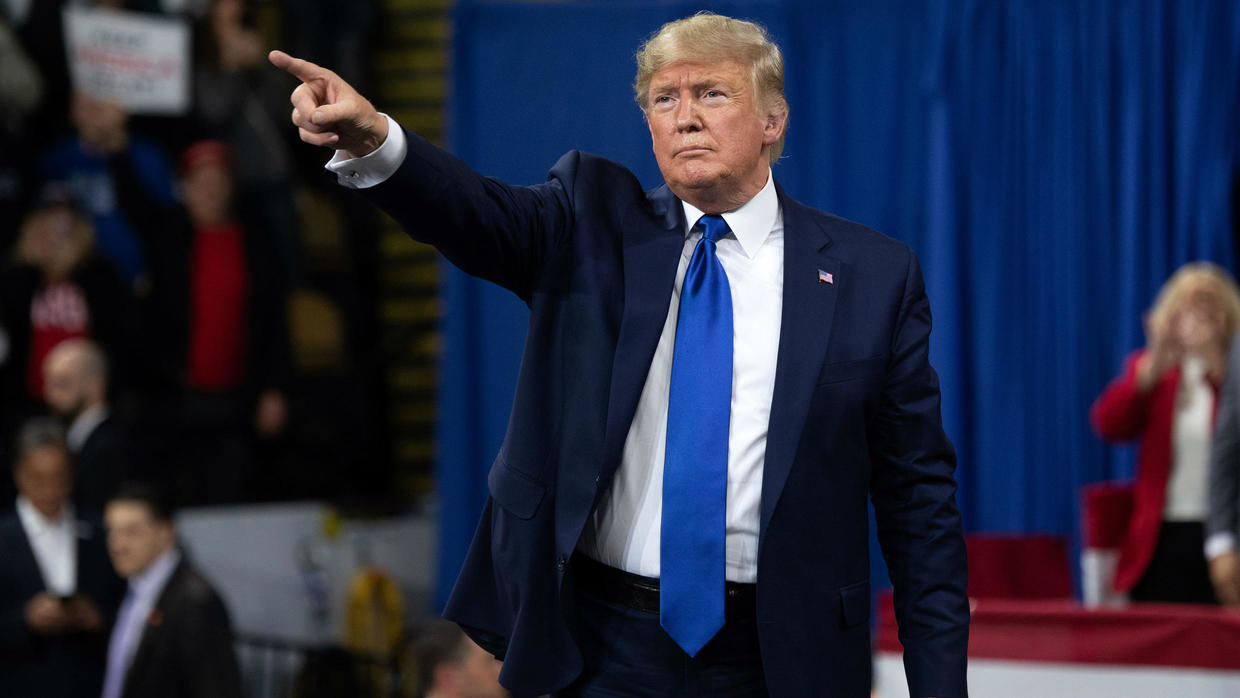Trump Vows to Revamp Economy in 2024 Run
21.07.2024 12:00 1 min. read Alexander Stefanov Source: https://www.barrons.com/articles/trump-election-economy-markets-inflation-debt-deficit-8a5c19b5?mod=hp_HERO
Source: https://www.barrons.com/articles/trump-election-economy-markets-inflation-debt-deficit-8a5c19b5?mod=hp_HERO
In Milwaukee, former President Donald Trump accepted the Republican presidential nomination after a high-energy four-day event.
Trump’s acceptance speech, spanning 92 minutes, was a blend of unifying rhetoric and pointed criticisms of his adversaries, portraying a nation in decline under current leadership.
Trump’s vision for a second term promises even more dramatic shifts than his first. He highlighted his capability to resolve global issues swiftly and outlined an aggressive economic agenda. His new approach could mark a stark departure from his previous policies, aiming to overhaul U.S. economic strategies.
If victorious in November, Trump could lead with a Republican Congress and a strengthened Supreme Court. His vice-presidential pick, Senator JD Vance, reflects his influence over the GOP, despite Vance’s previous criticisms of Trump.
Current economic conditions might play in Trump’s favor, with potential Federal Reserve rate cuts boosting economic activity and stock markets. However, the increase in government debt from new tax cuts could strain the bond market, pushing up long-term interest rates.
Trump’s consolidation of Republican support and the shifting economic landscape contribute to growing forecasts of a GOP sweep in the upcoming election, with analysts predicting a likely unified Republican government.
-
1
Economic Instability and Political Shift Fueling Bitcoin’s Rise – Galaxy Digital CEO
23.05.2025 12:00 2 min. read -
2
Trump Renews Attack on Fed Chair, Calls for Immediate Rate Cuts
18.05.2025 8:00 1 min. read -
3
Japan’s Inflation Hits 3.5% as Food Prices Soar and Tariff Risks Loom
23.05.2025 21:00 1 min. read -
4
US Dollar Dominance Under Threat Amid Yuan’s Global Ambitions
22.05.2025 14:00 2 min. read -
5
Wall Street Analyst Sees Bright Side of Ballooning U.S. Debt
30.05.2025 8:00 2 min. read
Tariffs Threaten to Stall U.S. Growth in 2025, Recovery Not Expected Until 2026
The U.S. economy may be closer to a downturn than many realize, according to Jay Bryson, chief economist at Wells Fargo.
Dollar Faces Deep Decline as Fed Cuts Pressure Currency, Warns Morgan Stanley
Morgan Stanley has issued a cautionary outlook on the U.S. dollar, predicting a major decline over the coming year as Federal Reserve rate cuts take hold.
Trillions in Debt Payments Could Break U.S. Economy, Ray Dalio Predicts
Legendary investor Ray Dalio has issued a stark warning about the trajectory of U.S. government finances, suggesting the country is drifting toward a series of severe economic shocks unless its debt spiral is urgently addressed.
Wall Street Veteran Warns Tariffs Could Disrupt AI-Driven Market Rally
Steve Eisman, the famed investor known for forecasting the 2008 housing collapse, is sounding the alarm—not on overvalued tech stocks or interest rates, but on the escalating risk of global trade disputes.
-
1
Economic Instability and Political Shift Fueling Bitcoin’s Rise – Galaxy Digital CEO
23.05.2025 12:00 2 min. read -
2
Trump Renews Attack on Fed Chair, Calls for Immediate Rate Cuts
18.05.2025 8:00 1 min. read -
3
Japan’s Inflation Hits 3.5% as Food Prices Soar and Tariff Risks Loom
23.05.2025 21:00 1 min. read -
4
US Dollar Dominance Under Threat Amid Yuan’s Global Ambitions
22.05.2025 14:00 2 min. read -
5
Wall Street Analyst Sees Bright Side of Ballooning U.S. Debt
30.05.2025 8:00 2 min. read


